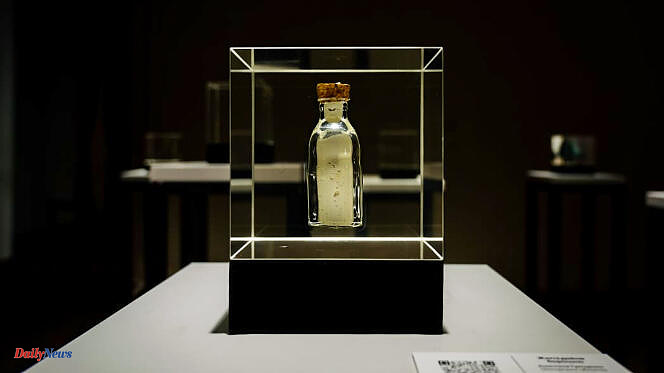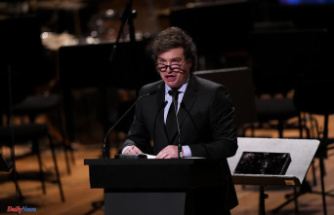A kind of snow globe, but cubic, without snow and with fragments of war inside: the end of a kamikaze drone, a Lego found on a playground destroyed by a missile strike, a piece of the Russian cargo plane Mriya, a handwritten page from a logbook, a religious icon extracted from the rubble of a building... So many relics of the war in Ukraine which are locked up, ad vitam, in 15 centimeter cubes in transparent epoxy resin, accompanied by their story told by a witness. Exhibited on The War Fragments Museum website, they are all sold for $800 each. The funds collected are entirely donated for humanitarian aid or to support the Ukrainian troops on the front.
The War Fragments Museum was launched two years ago by Tetyana Fiks, Anastasiia Afanasieva, Bohdan Cheshyk and Dmytro Koshovyi. These four friends worked together in IT until Russia invaded Ukraine. Stunned by what they then considered the unthinkable, they decided to get involved in their own way, by crystallizing art and activism. Their online museum aims to “encourage reflection, empathy and action,” says Anastasiia.
The first stories are collected on social networks. Then, looking for a diversity of profiles, the team goes into the field. For nine months, Tetyana, Anastasiia, Bohdan and Dmytro travel through a Ukraine with fire and blood. Over the course of the meetings, the testimonies accumulate. Men and women want to tell the nightmare of the Russian occupation. “All we had to do was listen. It was important for them not to remain silent, to share their disrupted daily lives with the world, to tell the truth,” Anastasiia argues.
A story, which later became a cube containing a little flour inside, particularly struck them. One day, Anastasiia learned by chance of the ordeal of children who found themselves deprived of their mothers from the first days of the war. The woman had gone to another village to see her disabled grandmother and was unable to return to her children. She was in territory controlled by Ukraine and they remained under Russian occupation. They even tried to make a trip to join their mother, but because of the danger, they had to return home. They lacked food and money to buy it. All they had at home was flour... For two weeks, these children ate only this flour until volunteers came to their aid.
The project has no end date. Most of the three hundred cubes created today are preserved by The War Fragments Museum. Some are loaned for temporary exhibitions in Europe and the United States. Others have found a permanent place in Ukrainian museums, such as the National Art Museum in Odessa and the collection of objects in the Saint Sophia National Reserve in kyiv. A lasting way to preserve the memory of a war that continues to last over time.












